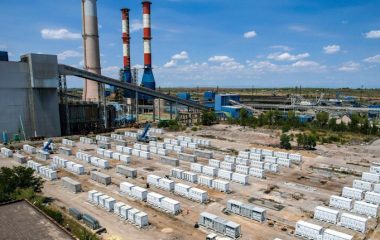
Photo: falco from Pixabay
The decision of power utility Elektroprivreda Srbije (EPS) and other suppliers on the market to increase the price of electricity for the business sector by 20% to 50% is a consequence of rising prices on European exchanges. The price for companies in Serbia is formed on the market. The state does not control it, as is the case for households.
The price of electricity in Serbia for companies had a rising trend from 2017 to 2019, gaining 15%, while the coronavirus pandemic prevented further growth. The main factor is the price increase of carbon dioxide emissions allowances within the European Union’s mechanism to curb fossil fuel use in the energy sector. The price shock for electricity consumers in Serbia could have been milder if authorities advised companies in time on the possible impact of the EU energy transition on prices and if they introduced measures to help firms ease the inevitable burden.
However, the companies also had to learn a bit more about the energy transition.
Prices of electricity for companies in Serbia have been on a rising trend since 2017
The rise in electricity prices on European exchanges in the last six months from about EUR 50 per MWh to about EUR 80 per MWh results from a jump in prices of a ton of CO2 equivalent from between EUR 20 and 27 to about EUR 55.
CO2 certificates are not traded in Serbia, so EPS doesn’t bear the cost. The price in Serbia is formed freely and follows the European benchmarks, similar to many other products.
Electricity consumers in Serbia are in big trouble
Consumers in the free market, primarily the firms supplied at medium and high voltage, face the biggest challenges. The increase in the price of electricity by 20% or even 50% seriously affects every company.
Same thing is happening in Serbia as in Europe
Dejan Stojčevski, Chief Operating Officer of SEEPEX power exchange, told Balkan Green Energy News that the price offers of all suppliers, including EPS, follow developments on European stock exchanges, including the futures prices for the following quarters or next year.
“These are long-term contracts, so suppliers are looking at current prices, which are around EUR 80 per MWh in this region, and have never been higher at this time of year, and futures for next year, whose value is around EUR 70 per MWh. No one will make offers to consumers below this level,” he said.
Current prices, at around EUR 80 per MWh, have never been higher in the region at this time of year
Due to the pandemic, the average baseload price last year in the region was around EUR 39 per MWh, compared to EUR 50 to EUR 51 per MWh from 2017 through 2019. Before the onset of the coronavirus, the price of CO2 was EUR 20 to EUR 27 per ton.
This year the price of CO2 surpassed the EUR 50 margin, which, according to Stojčevski, directly contributed to the rise in power prices on the market by an average of EUR 20 to EUR 30 per MWh or 50%.
“This growth may be an outcome of speculation, but that does not change things. Even if there is a drop in CO2 prices, it will not be drastic, and it will not significantly change the situation. No one can blame suppliers in Serbia for offering higher prices; that is how the free market is functioning. What is happening in Serbia is happening everywhere in Europe,” Stojčevski said.
EPS’s market share is 95% when it comes to supplying customers at medium and high voltage
An electricity trader who did not want to speak officially told Balkan Green Energy News that EPS has production facilities in Serbia to offer lower prices than its competition. EPS, by the way, holds 95% of the market when it comes to supplying customers at medium and high voltage.
“Also, EPS does not pay for CO2 certificates, and that is why it is unfair competition to all other producers from the EU. In this time of rising electricity prices, EPS has the opportunity to earn a lot, given it will sell its goods at high prices, which include the cost of CO2, and the company doesn’t bear that cost,” the person said.
Our source added the region is facing growing pressure to introduce CO2 pricing, and a decision on introducing an EU cross-border tax on CO2 is expected soon.
“The price in Serbia doesn’t depend on whether EPS is paying for CO2. High prices are here to stay. Consumers have to get used to it,” according to the trader.
Energy buyers are facing energy transition
When asked how electricity consumers can protect themselves from high prices, Dejan Stojčevski said several ways. He added that large investments in renewable energy could increase the share of green energy and lower the market prices, but it would take time.
Installing solar panels on roofs of factories is an option that would help produce some of the energy that would be consumed and reduce the cost of procuring it.
Solutions for companies include the installation of solar panels and direct trade on electricity exchanges
“Firms can join forces and independently buy electricity together on the power exchange for their own needs. In that way, they would directly source energy, and they wouldn’t depend on intermediaries. Of course, they must have the know-how to trade and solve balancing problems,” Stojčevski said.
Business consumers in Serbia face the energy transition, which in the case of EPS has not started yet, except for the prices EPS offers to companies. This includes paying for the right to emit CO2, switching from fossil fuels to renewable sources, using new technologies, producing electricity for self-consumption (prosumers), corporate power purchase agreements, but also higher electricity prices.
Serbia has been delaying the energy transition for years (the latest moves by the Ministry of Mining and Energy give hope that things are changing). Still, the example of rising electricity prices shows that the energy transition in the EU has spilled over to Serbia.
EPS: Electricity is a market commodity
Elektroprivreda Srbije noted in a Balkan Green Energy News statement that electricity is a market commodity for consumers on medium and high voltage.
“The current price is a consequence of prices on power exchanges, which have reached record levels. Prices in the region increased by about EUR 23 to EUR 27 per MWh or 70% to 80% from the same period of last year. The realized spot price on the largest exchange in Europe, EEX in Germany, increased by about EUR 30 per MWh or 130% between January 1 and June 15, 2021, from the same period of last year,” the company said.
Electricity prices in the region and Europe in the first half of 2020 were the second-lowest ever, primarily due to the COVID-19 pandemic.
The biggest reason for the increase in electricity prices in Europe is, first of all, the increase in the price of CO2 emissions allowances to a historical maximum this year, EPS said.
As for Serbia, in June 2019, the baseload reference price on the wholesale market for the period July 2019 to June 2020 was EUR 57 per MWh, while in June 2020, the level for July 2020 to June 2021 was EUR 46 per MWh.
According to EPS, in June 2021, the price for July 2021 to June 2022 is at 77 EUR per MWh.


















Be the first one to comment on this article.